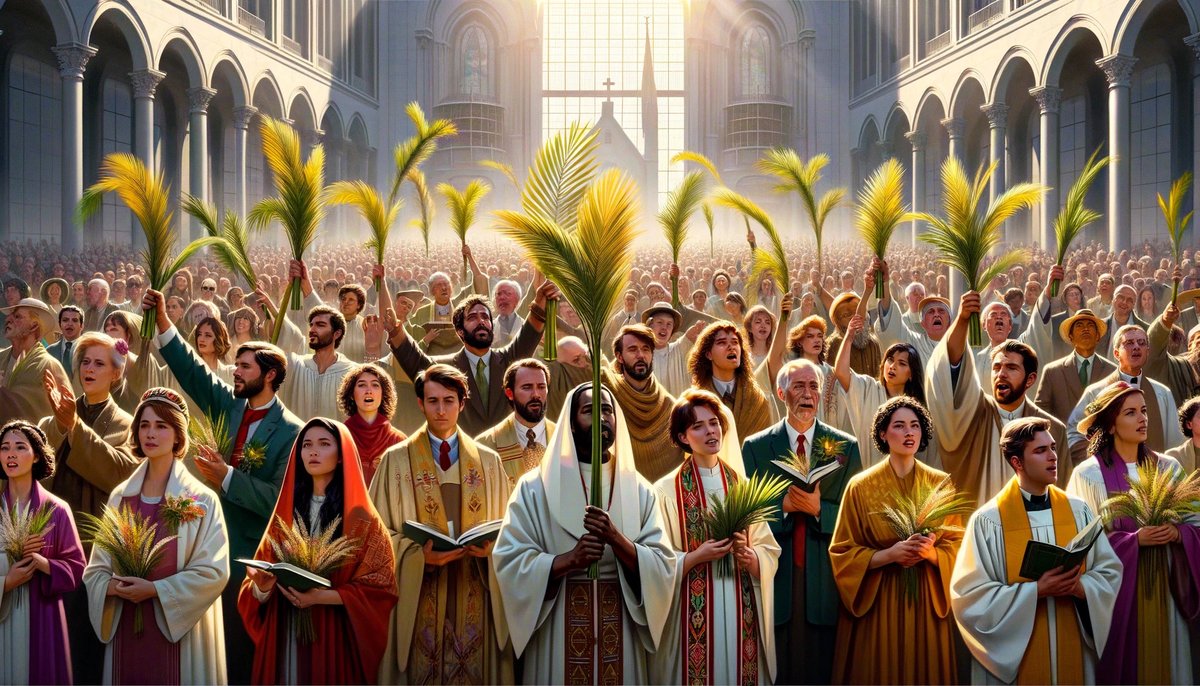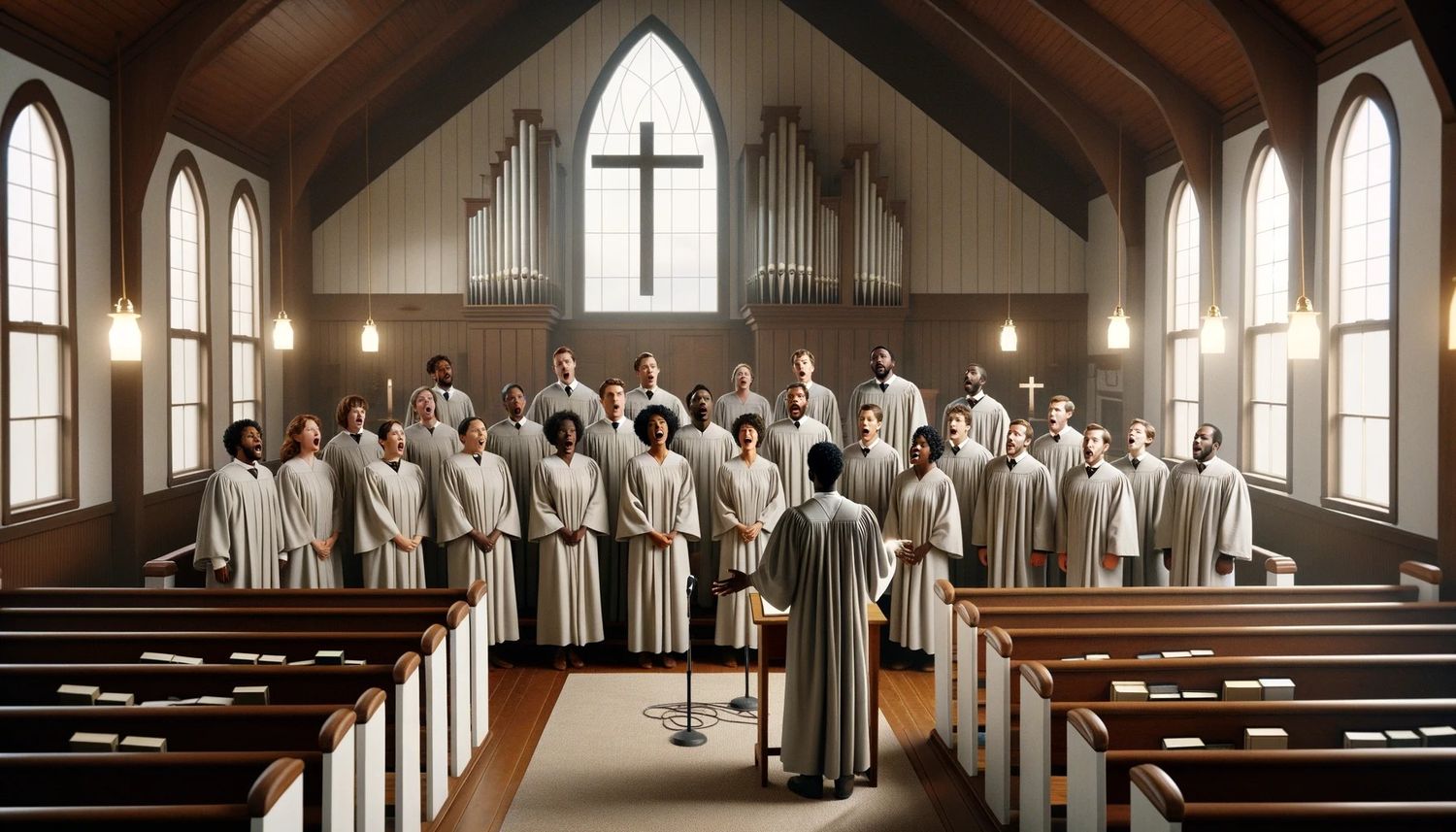Home>Arts and Culture>What Are Hymns


Arts and Culture
What Are Hymns
Published: March 7, 2024
Ericka Andersen, an editor at Christian.net, expertly merges digital strategy with content creation, focusing on faith and societal issues. Her communication skills enhance the platform's engaging narratives, fostering meaningful dialogue on belief's impact on society.
Explore the history and significance of hymns in arts and culture. Learn about their impact on music and religious traditions.
(Many of the links in this article redirect to a specific reviewed product. Your purchase of these products through affiliate links helps to generate commission for Christian.net, at no extra cost. Learn more)
Table of Contents
Introduction
What are hymns? Hymns are religious songs that are often sung as a form of worship or devotion. They have been an integral part of religious traditions for centuries, serving as a means of expressing faith, praise, and devotion to a higher power. Hymns are typically characterized by their spiritual and uplifting lyrics, often accompanied by melodic tunes that are sung by congregations during religious services. These songs have a rich history and play a significant role in various religious practices and cultural traditions. In this article, we will explore the history of hymns, the different types of hymns, their role in worship, their significance in different cultures, and their influence on music.
Read more: What Are Advent Hymns
History of Hymns
Hymns have a long and storied history that dates back to ancient times. The earliest hymns can be traced to the Vedas, the sacred scriptures of Hinduism, which were composed in India around 1500 BCE. These hymns were written in praise of various deities and were an essential part of religious rituals and ceremonies. In the Judeo-Christian tradition, the Book of Psalms in the Hebrew Bible contains hymns and songs of praise that were sung in ancient Israel. The Psalms cover a wide range of emotions and themes, reflecting the experiences of the people of Israel and their relationship with God.
During the early Christian era, hymnody began to flourish as part of the liturgical practices of the church. One of the most influential early hymn writers was Ambrose of Milan, who is credited with introducing hymn singing into Christian worship in the 4th century. The development of hymnody continued through the Middle Ages, with the composition of hymns in Latin by notable figures such as St. Thomas Aquinas and St. Francis of Assisi.
The Protestant Reformation in the 16th century brought about a significant shift in hymnody. Reformers such as Martin Luther and John Calvin advocated for congregational singing in the vernacular language, leading to the creation of hymns that were accessible to the common people. This period saw the emergence of iconic hymn writers like Isaac Watts and Charles Wesley, whose hymns are still sung in churches today.
The 19th and 20th centuries witnessed a proliferation of hymnody across various Christian denominations, as well as in other religious traditions. Hymnals were compiled, containing a diverse collection of hymns that reflected the theological and cultural diversity of the global Christian community. The advent of the printing press and the spread of missionary work contributed to the dissemination of hymns to different parts of the world, where they were embraced and adapted to local musical and cultural expressions.
In recent times, contemporary Christian music has expanded the repertoire of hymnody, incorporating modern musical styles and lyrical themes while retaining the essence of traditional hymns. The history of hymns is a testament to their enduring significance in the expression of faith and the communal worship of believers across diverse cultures and traditions.
Types of Hymns
-
Hymns of Praise: These hymns exalt and glorify the divine attributes of a deity, expressing adoration and reverence. They are characterized by their joyful and celebratory tone, uplifting the spirits of worshippers and fostering a sense of awe and wonder.
-
Hymns of Thanksgiving: These hymns express gratitude and thankfulness to a higher power for blessings, provisions, and the gift of life. They serve as a means of acknowledging the goodness and faithfulness of the divine and are often sung during harvest festivals and religious observances.
-
Hymns of Adoration: These hymns focus on the beauty, majesty, and holiness of the divine, inviting worshippers to contemplate the transcendent nature of the deity. They inspire a sense of reverence and wonder, drawing attention to the awe-inspiring qualities of the divine being.
-
Hymns of Supplication: These hymns are prayers set to music, expressing the desires and petitions of worshippers for divine intervention, guidance, and support. They convey a sense of humility and dependency on the divine, seeking comfort and strength in times of need.
-
Hymns of Redemption: These hymns center on the themes of salvation, forgiveness, and the redemptive work of the divine. They reflect on the sacrificial love and grace extended to humanity, offering hope and assurance of spiritual renewal and reconciliation.
-
Hymns of Commitment: These hymns express dedication, loyalty, and surrender to the divine will, calling worshippers to a life of faithfulness and obedience. They serve as a reaffirmation of one's devotion and allegiance to the divine purpose and calling.
-
Hymns of Lamentation: These hymns express sorrow, grief, and lament in the face of suffering, loss, and adversity. They provide a channel for the expression of human struggles and emotions, seeking solace and comfort in the presence of the divine amidst trials and tribulations.
-
Hymns of Hope: These hymns offer encouragement, assurance, and optimism in the midst of challenges and uncertainties. They inspire faith and confidence in the promises of the divine, uplifting the spirits of worshippers and instilling a sense of perseverance and resilience.
The diverse types of hymns cater to the multifaceted dimensions of human experience and spirituality, providing a rich tapestry of musical and lyrical expressions that resonate with the hearts and souls of worshippers across different religious traditions.
The Role of Hymns in Worship
Hymns play a pivotal role in the worship practices of various religious traditions, serving as a means of communal expression, spiritual edification, and theological instruction. Their significance extends beyond mere musical accompaniment, as they contribute to the overall worship experience and the formation of religious identity. Here are some key aspects of the role of hymns in worship:
1. Spiritual Engagement
Hymns provide a channel for worshippers to engage with the divine on a spiritual and emotional level. Through the combination of meaningful lyrics and melodious tunes, hymns evoke a sense of reverence, awe, and intimacy with the divine presence. They create a sacred atmosphere that facilitates personal reflection, prayer, and communion with the transcendent.
Read more: What Is A Lutheran Hymn
2. Teaching and Proclamation
Hymns serve as a vehicle for the transmission of religious teachings, doctrinal truths, and moral values. The theological content of hymns conveys foundational beliefs and ethical principles, reinforcing the faith identity of worshippers. Additionally, hymns proclaim the narratives of faith, recounting the redemptive acts of the divine and the stories of spiritual significance.
3. Expressing Collective Identity
The communal singing of hymns fosters a sense of unity, solidarity, and shared identity among worshippers. As voices blend in harmony, a sense of belonging and participation in a faith community is cultivated. Hymns affirm the collective memory, heritage, and aspirations of a religious tradition, strengthening the bonds of fellowship and mutual support.
4. Emotional Expression
Hymns provide an outlet for the expression of a wide range of human emotions, including joy, gratitude, sorrow, hope, and longing. They resonate with the joys and struggles of life, offering comfort, encouragement, and solace to worshippers. Through hymns, worshippers find validation for their emotional experiences within the context of faith and spirituality.
5. Enhancing Worship Dynamics
Hymns contribute to the dynamic flow of worship services, punctuating moments of praise, prayer, confession, and contemplation. They complement other elements of worship, such as scripture readings, sermons, and sacraments, enriching the overall worship experience. Hymns create a rhythm of worship that engages the senses and the intellect, leading worshippers into deeper encounters with the divine.
Read more: What Are Traditional Hymns?
6. Cultural and Historical Preservation
Hymns serve as repositories of cultural and historical heritage, preserving the musical and lyrical traditions of a particular religious community. They carry the echoes of generations past, embodying the collective wisdom, creativity, and artistic expressions of diverse cultures. Through hymns, traditions are upheld and transmitted to future generations.
In essence, hymns are integral to the fabric of worship, weaving together the threads of spirituality, community, tradition, and creativity. Their enduring role in worship reflects their capacity to inspire, unite, and uplift the hearts of worshippers across the tapestry of religious diversity.
Hymns in Different Cultures
Hymns hold a significant place in the religious and cultural tapestries of diverse societies around the world. They reflect the unique expressions of faith, spirituality, and artistic creativity within different cultural contexts. The melodies, rhythms, and lyrical themes of hymns vary across cultures, offering a glimpse into the rich and vibrant traditions of worship and devotion. Here are some examples of hymns in different cultures:
1. Western Christian Hymnody
In Western Christian traditions, hymnody has been shaped by the influences of European musical heritage. Hymns such as "Amazing Grace" and "A Mighty Fortress Is Our God" have become iconic in Protestant worship, carrying the legacy of the Reformation era. The rich harmonies and melodic structures of Western hymns have left an indelible mark on the global landscape of Christian music.
2. Eastern Orthodox Chant
The Eastern Orthodox tradition has a rich heritage of liturgical hymnody, characterized by intricate vocal chants and modal melodies. Byzantine hymns, known as "Troparia" and "Kontakia," are sung in a monophonic style, reflecting the solemn and mystical ethos of Orthodox worship. These hymns evoke a sense of timelessness and spiritual transcendence, drawing worshippers into the depths of sacred mystery.
Read more: What Are Shaker Hymns
3. African-American Spirituals
The tradition of African-American spirituals has given rise to a genre of hymnody that embodies the experiences of slavery, liberation, and faith. Spirituals such as "Swing Low, Sweet Chariot" and "Go Down, Moses" carry the poignant narratives of struggle and hope, reflecting the resilience and spiritual resilience of the African-American community. These hymns have become anthems of freedom and perseverance, resonating with audiences worldwide.
4. Hindu Bhajans
In Hinduism, the devotional songs known as "bhajans" form an integral part of worship and religious gatherings. Bhajans are characterized by their rhythmic patterns, repetitive refrains, and devotional lyrics that extol the virtues of Hindu deities. They are sung with fervent devotion and are accompanied by traditional instruments, creating a vibrant and celebratory atmosphere of worship.
5. Islamic Nasheeds
Within the Islamic tradition, nasheeds are a form of hymnody that consists of vocal chants and recitations of Islamic poetry. Nasheeds convey themes of praise for the Prophet Muhammad, expressions of faith, and moral exhortations. They are often performed a cappella or with minimal instrumental accompaniment, emphasizing the spiritual and poetic dimensions of Islamic hymnody.
6. Indigenous Sacred Songs
Indigenous cultures around the world have their own forms of sacred songs and hymns that are deeply rooted in their spiritual traditions. These songs reflect the interconnectedness of indigenous communities with the natural world, ancestral wisdom, and the sacredness of the land. They embody a reverence for the earth, the elements, and the spirits, carrying the oral traditions of indigenous peoples through generations.
The diversity of hymnody across different cultures underscores the universal human impulse to express devotion, reverence, and gratitude to the divine. Hymns serve as bridges that connect people across cultural divides, fostering an appreciation for the beauty and depth of religious and spiritual expressions around the world.
Read more: What Are Praise Hymns
The Influence of Hymns on Music
Hymns have exerted a profound influence on the development of music across various genres and styles, shaping the musical landscape and inspiring countless composers and musicians. The impact of hymns on music can be observed in the following aspects:
-
Melodic and Harmonic Structures: Hymns have contributed to the evolution of melodic and harmonic conventions in music. The simple yet memorable tunes of hymns have served as templates for the composition of folk songs, classical compositions, and popular music. The use of hymn-like melodies and chord progressions has become a hallmark of many musical traditions, reflecting the enduring appeal of hymnody.
-
Choral and Vocal Music: The tradition of congregational singing in hymnody has influenced the development of choral music and vocal arrangements. Composers have drawn inspiration from hymns to create elaborate choral works, vocal harmonies, and a cappella arrangements. The choral settings of hymns have showcased the expressive potential of vocal music, enriching the repertoire of choral ensembles and vocal performers.
-
Liturgical and Sacred Music: Hymns have provided a foundation for the composition of liturgical and sacred music in religious settings. The melodies and texts of hymns have been adapted into larger choral and orchestral compositions for use in worship services, oratorios, and sacred concerts. Hymn-based compositions have contributed to the preservation of religious musical traditions and the cultivation of spiritual experiences through music.
-
Folk and Popular Music: Hymns have left an indelible mark on the development of folk and popular music traditions. The themes and melodies of hymns have been integrated into folk ballads, spirituals, and gospel music, reflecting the influence of hymnody on the oral traditions of different cultures. Moreover, hymns have inspired the creation of contemporary Christian music, praise songs, and worship anthems that resonate with modern audiences.
-
Musical Notation and Arrangement: The practice of hymn singing has played a role in the advancement of musical notation and arrangement techniques. Hymnals and songbooks have served as repositories of musical knowledge, providing a platform for the dissemination of musical literacy and the standardization of hymn arrangements. The notation of hymn tunes has contributed to the development of music education and the preservation of musical heritage.
-
Cross-Cultural Adaptation: Hymns have transcended cultural boundaries, leading to cross-cultural adaptations and reinterpretations in diverse musical contexts. The melodies and texts of hymns have been embraced by musicians from different cultural backgrounds, resulting in hybrid forms of music that blend traditional hymnody with local musical idioms. This cross-pollination of musical styles has enriched the global musical landscape, fostering intercultural dialogue and artistic innovation.
The influence of hymns on music underscores their enduring legacy as sources of inspiration, creativity, and spiritual expression. Their impact resonates across the spectrum of musical genres, demonstrating the profound interplay between religious devotion and artistic innovation.











